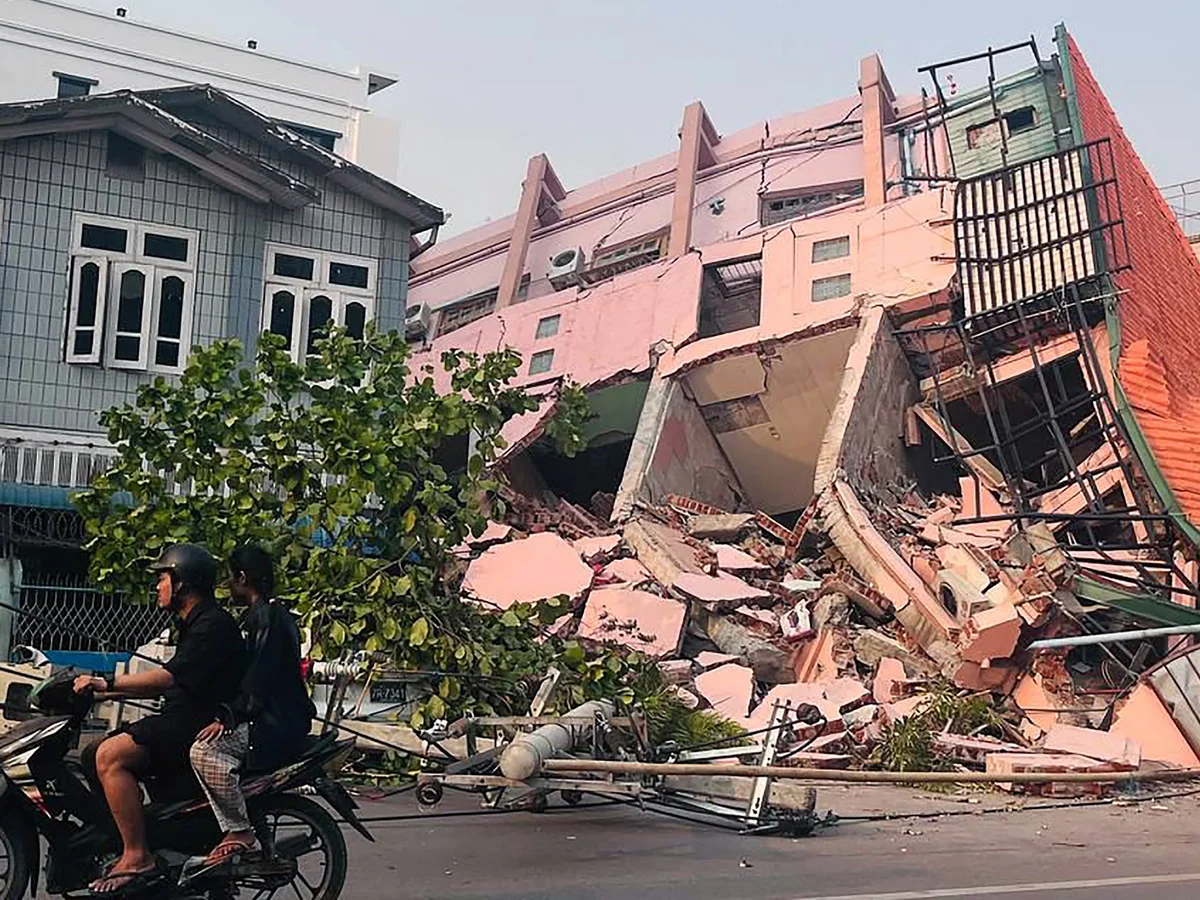Myanmar, a country located in Southeast Asia, has long been vulnerable to natural disasters, particularly earthquakes. Due to its geographical position at the convergence of several tectonic plates, the country experiences frequent seismic activity. These earthquakes bring devastating consequences, affecting lives, infrastructure, and the country’s cultural heritage. While Myanmar has made efforts in earthquake preparedness and response, the losses from such disasters continue to be significant.
Human Losses
The most devastating impact of earthquakes in Myanmar is the loss of human life. Earthquakes can strike with little warning, and when they do, the destruction is often immediate and overwhelming. In some of the most severe seismic events, entire villages have been leveled, and entire families have been wiped out. The lack of timely early-warning systems in rural areas means that many people are unable to evacuate or take safety measures in time.
For example, the 2016 earthquake with a magnitude of 6.8 that struck the central part of Myanmar, near Chauk, resulted in the deaths of more than 100 people. Thousands more were injured, and countless individuals were left homeless. With inadequate healthcare infrastructure in some regions, the death toll could have been higher had it not been for quick intervention from international aid organizations.
The emotional and psychological toll on survivors is also profound. Many individuals are left traumatized, having lost loved ones or witnessed the destruction of their homes. Recovery from the emotional scars of an earthquake can take years, with long-term impacts on mental health, especially for children and those who have experienced significant loss.
Infrastructure and Economic Losses
Beyond human lives, earthquakes in Myanmar cause widespread damage to infrastructure. Roads, bridges, and buildings—especially in rural areas—are often poorly constructed, making them more susceptible to collapse during seismic events. When these structures fail, it complicates rescue operations and delays the delivery of aid. In many cases, vital transportation networks are destroyed, isolating entire regions and making it harder to provide support to those in need.
The 2011 earthquake, for instance, severely damaged infrastructure in eastern Myanmar, including roads and bridges that were essential for trade and communication with neighboring countries like Thailand and Laos. The damage to infrastructure hinders economic activity, delays reconstruction efforts, and contributes to long-term economic setbacks for the affected regions. In addition, businesses are forced to shut down, leading to the loss of livelihoods and creating economic uncertainty for many families.
The cost of rebuilding is another significant loss. Myanmar’s economy is still developing, and resources for reconstruction are often limited. With many parts of the country still recovering from previous disasters, the financial burden of rebuilding can be crippling. In some cases, communities remain displaced for years as they wait for assistance, and entire neighborhoods may take decades to fully recover from the damage.
Cultural and Heritage Losses
Myanmar is home to a rich cultural and historical legacy, with ancient temples, pagodas, and architectural wonders that draw tourists from around the world. However, earthquakes have repeatedly damaged or destroyed many of these priceless structures. The Bagan region, famous for its thousands of ancient pagodas, is particularly vulnerable. When the 2016 earthquake struck, it caused significant damage to more than 100 temples and pagodas, some of which were over a thousand years old. These structures are not only symbols of Myanmar’s rich cultural heritage but also important religious landmarks for the country’s Buddhist population.
The destruction of these sites represents a loss of cultural identity for many people in Myanmar. The historical significance of these buildings cannot be overstated; they are the living reminders of the country’s past and its spiritual and architectural accomplishments. The loss of such landmarks is a blow to the nation’s sense of pride and history, and efforts to restore or preserve them are ongoing but costly and time-consuming.
Challenges in Response and Recovery
Myanmar’s ability to respond to and recover from earthquakes has been challenged by a variety of factors. The country’s infrastructure is often inadequate for handling large-scale disaster response, particularly in remote and rural areas. Additionally, Myanmar’s health and emergency services are not always equipped to deal with the scale of destruction caused by major earthquakes.
International aid plays a crucial role in the recovery process, but it often arrives after significant delays. The geography of the country, along with damaged infrastructure, complicates the delivery of assistance. Furthermore, there are logistical challenges in coordinating relief efforts and ensuring that resources reach the most affected areas.
The government of Myanmar has made efforts to improve disaster preparedness, but the scale of the losses continues to outpace these efforts. In particular, Myanmar needs to focus on building earthquake-resistant infrastructure, improving early warning systems, and educating communities on how to respond to earthquakes. Disaster preparedness programs and increased investment in disaster-resilient infrastructure are critical for reducing the future impact of seismic events.
Conclusion
Earthquakes in Myanmar have left a lasting impact on the country, with significant losses in terms of human life, infrastructure, and cultural heritage. While recovery efforts are ongoing, the challenges remain immense. The emotional, economic, and physical toll of these natural disasters underscores the importance of improving preparedness, response mechanisms, and resilience to such events. As Myanmar continues to grow and develop, addressing its vulnerability to earthquakes will be crucial in safeguarding its people, economy, and cultural heritage from future losses.

Leave a Reply